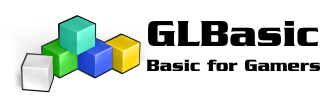1/2) I had just updated to 6.122 - as noted by Kosta it's that the playmusic command has been extended but the example code hasn't. Therefore it's just that the demo needs updating.
2) The problem ended up being my NVidia drivers for my graphics card (nvoglnt.dll is related to the nvidia graphics card) - I updated to the latest and I can now run the code correctly
3) My IE isn't blocked, but it may be related to my Virus Software (Trend Internet Security). I'm not concerned about it as it's only the first page that says it can't be loaded and it corrects as soon as I select a page to view, I just thought I'd point it out.
Cheers!
2) The problem ended up being my NVidia drivers for my graphics card (nvoglnt.dll is related to the nvidia graphics card) - I updated to the latest and I can now run the code correctly
3) My IE isn't blocked, but it may be related to my Virus Software (Trend Internet Security). I'm not concerned about it as it's only the first page that says it can't be loaded and it corrects as soon as I select a page to view, I just thought I'd point it out.
Cheers!
